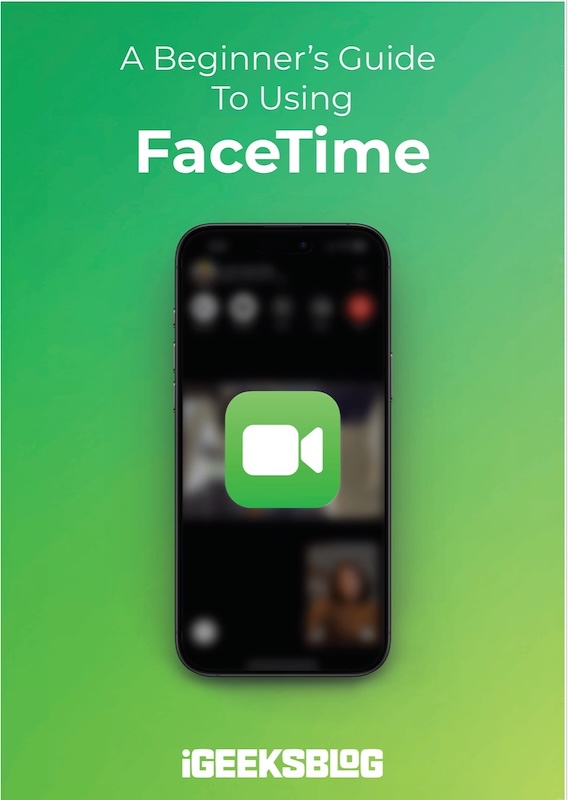
FaceTime Like a Pro
Get our exclusive Ultimate FaceTime Guide 📚 — absolutely FREE when you sign up for our newsletter below.

FaceTime Like a Pro
Get our exclusive Ultimate FaceTime Guide 📚 — absolutely FREE when you sign up for our newsletter below.
Find out how many times your iPhone's battery has cycled—check your battery's health in just a few quick steps.
Is your iPhone starting to feel older than it should? If so, keeping an eye on your iPhone’s battery health is a good way to ensure your phone continues to work well. One of the easiest ways to check on your battery is by looking at its cycle count—that’s the number of times your battery has been fully charged and discharged.
Knowing this number can help you figure out when you might need a battery replacement. That way, you’re not surprised one day by a phone that dies too quickly. In this guide, I’ll show you step-by-step how to check your iPhone’s battery cycle count, whether you’ve got the latest model or one that’s a few years old, no matter which version of iOS you’re running.
Think of your battery cycle count as your iPhone’s way of keeping track of how much work its battery has done over time. It’s not just about charging from 0% to 100% in one shot—instead, every time you use and recharge bits of your battery that add up to 100%, that counts as one cycle. So, you might use 70% one day and 30% the next; together, that’s a full cycle, even if you never let your phone hit zero.

For example:
These cycles accumulate gradually, whether you charge your iPhone once or multiple times in a day.
Your iPhone’s battery cycle count is basically a window into your battery’s health and how much life it has left. Like any lithium-ion battery, your iPhone’s battery can only go through a certain number of cycles before it starts to lose its capacity. In other words, the more cycles you rack up, the closer you get to needing a battery replacement. Here’s what Apple says about it:
Checking your iPhone’s battery cycle count regularly can help you:
If you’ve got an iPhone 15, 16, or 16e running iOS 17.4 or newer, Apple has made it much easier to see your battery’s cycle count. Here’s how:

On iPhone 14 and earlier, the cycle count is still recorded by your device, but Apple does not display it in the Settings app. That’s why you need to use a shortcut or manually search your analytics data to find this information.



If you prefer not to use a shortcut, you can extract the cycle count manually:



If you want a quicker or more visual way to check your iPhone’s battery cycle count—especially if you have an older model—there are some third-party apps that can make things easier. These apps often give you extra details about your battery’s health and come with user-friendly dashboards. Just keep in mind that because of iOS privacy rules, some apps might not be able to pull up all the info directly from your device and could require you to connect your iPhone to a Mac or PC.
Here are some popular options:
Important: It’s always a good idea to download these apps straight from the official website or the App Store to keep things safe. Be careful about what data you share, and steer clear of any apps that ask for permissions they don’t really need.
While third-party apps can be handy, Apple’s own features and trusted shortcuts are usually the safest and most private ways to check your battery info. Only use outside apps if you’re comfortable and know exactly what you’re agreeing to.
It might be time for a new battery if you’re seeing any of these signs:

For more details, you can always check out Apple’s official battery guide.
A few good habits can help your battery stay healthy for as long as possible:
Checking your iPhone’s battery cycle count is a simple way to keep tabs on how your phone is holding up. Whether you’ve got a brand-new model or one that’s several years old, knowing your cycle count helps you decide if your battery needs replacing so your iPhone keeps working the way it should.
Just one last thing: the instructions for iPhone 16 and 16e are based on Apple’s latest updates. If you’ve got a newer model, it’s worth double-checking Apple’s support pages for the most up-to-date info.
Have you tried checking your battery’s cycle count yet? Let me know how it went or if you have any questions!
FAQs
This feature is only available on iPhone 15 and newer models running iOS 17.4 or later. For older models, use the shortcut or manual methods above.
A high cycle count means your battery has been through many charge cycles, but if your battery health is above 80% and your device works fine, there’s no immediate cause for concern.
For privacy and accuracy, it’s best to use Apple’s built-in features or shortcuts from reputable sources. Always review requested permissions and avoid sharing analytics files with unfamiliar apps or services.
While 100% iPhone battery health forever might be a myth, keeping it near the peak is achievable! Our comprehensive article on maintaining your iPhone’s battery health outlines the simplest methods for achieving this goal.
Read more: